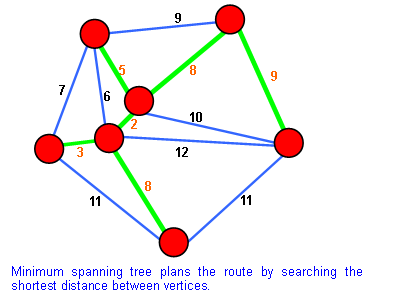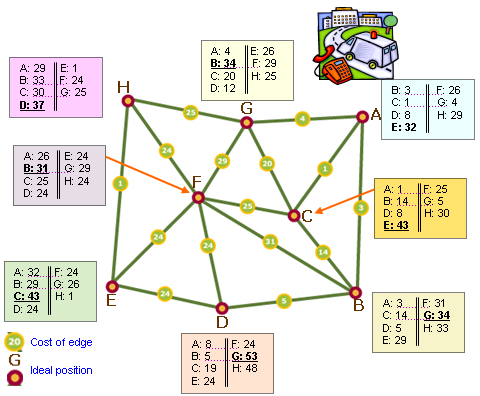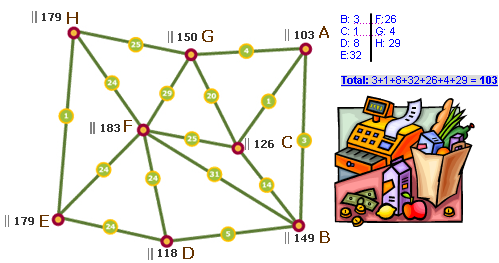
Location Analysis
A spanning tree is a sub-tree that connects all the vertices in a connected un-directed graph. In our real-world issue, it is just like the cable network in school. If we give weights for those edges between vertices to represent distance, traveling time, or other costs (for example, the cost would be higher if the company needs to bury the cable deeper); then we will have several distinct sub-trees for a network. In order to decrease the cost or time consuming, we may need to find out a specific route that can minimize the cost, and the one which allows us to find the lowest cost(the minimum total weight) is Minimum Spanning Tree.

Center Problem solver is for analyzing the location for emergency facilities, such as community hospitals, fire extinguishing equipment, etc. Let's take this connected graph below (undirected) for example; there are eight nodes and several edges, the nodes are considered the important location of the hospital (community), and the edges are considered network cost between nodes. First of all, we have to calculate the costs from one node to all the rest nodes individually and highlight the largest value. To location A, the cost to location B is “3”, to location C is “1”, and the largest cost is “32”, it is between A and E. Thus the value “32” will be highlighted. After all the possible values are calculated, find out the smallest value, which belongs to location F. So location F is our center location for the hospital. The main purpose is to find out the location which has the smallest of largest cost. So, even if you travel to the farthest location, you could still maintain the lowest cost.

Center Problem is to find out the lowest cost of the farthest location, while the Median Problem is to search the smallest sum of all costs for each node. Center Problem is for emergency facilities, while Median Problem helps you find out the best location for common facilities, such as supermarkets, gas stations, or other business-oriented locations. Take the figure below for example this network is exactly the same as the one of Center Problem. In this Median Problem case, we not only calculate the cost to each node, but also the sum. To location A, the cost to location B is “3”, to location C is “1”, and the sum of costs to each node is “103”. Thus “103” will be the value for further comparison. After the total cost of each location is obtained, we see the lowest cost in this network is location A (103). Therefore, location A is selected as the median point to establish a supermarket.

©2016 Supergeo Technologies Inc. All rights reserved.